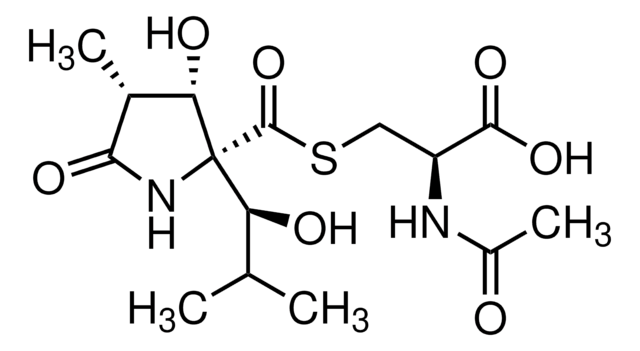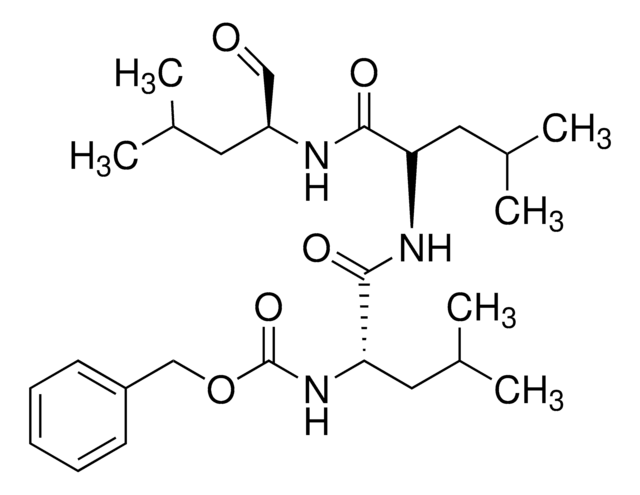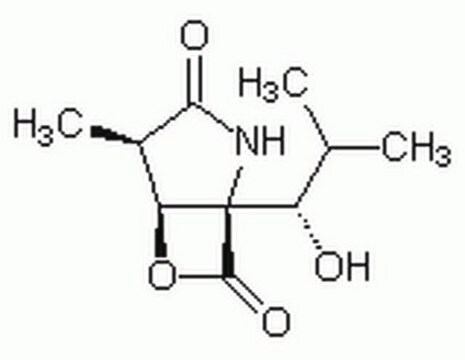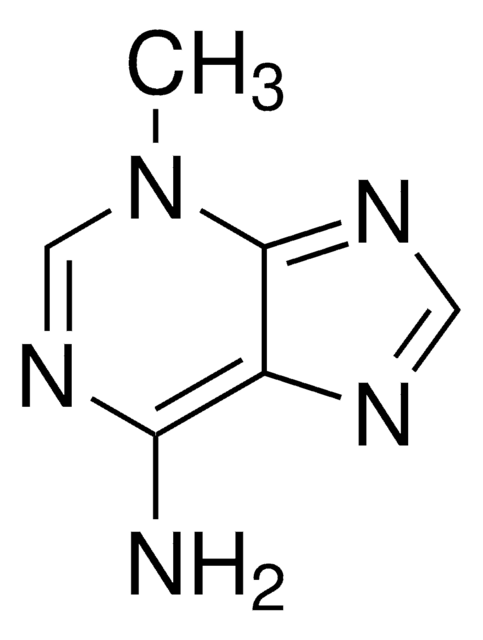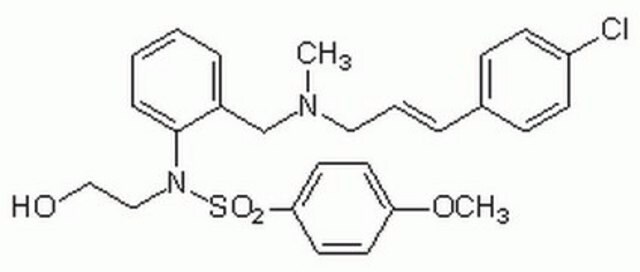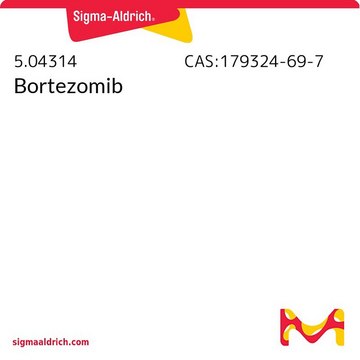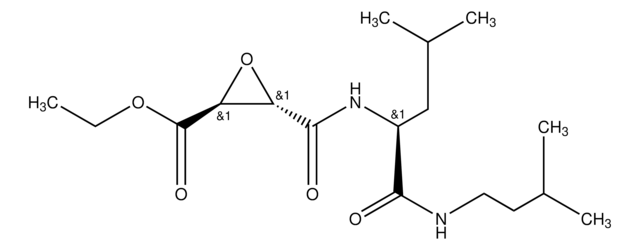426100
Lactacystin
≥99% (HPLC), solid, proteasome inhibitor, Calbiochem®
Synonyme(s) :
Lactacystin, Synthetic, Proteasome Inhibitor VI
About This Item
Produits recommandés
Nom du produit
Lactacystin, Synthetic, Lactacystin, Synthetic, CAS 1258004-00-0, is an irreversible inhibitor of 20S proteasome inhibitor (IC₅₀ = 500 nM). A covalent inhibitor of the chymotrypsin & trypsin-like activities of proteasome.
Niveau de qualité
Essai
≥99% (HPLC)
Forme
solid
Fabricant/nom de marque
Calbiochem®
Conditions de stockage
OK to freeze
Couleur
white
Solubilité
DMSO: 50 mg/mL
water: soluble
Conditions d'expédition
ambient
Température de stockage
−20°C
Chaîne SMILES
S(C[C@H](NC(=O)C)C(=O)O)C(=O)[C@]1(NC(=O)[C@@H]([C@@H]1O)C)[C@@H](O)C(C)C
InChI
1S/C15H24N2O7S/c1-6(2)10(19)15(11(20)7(3)12(21)17-15)14(24)25-5-9(13(22)23)16-8(4)18/h6-7,9-11,19-20H,5H2,1-4H3,(H,16,18)(H,17,21)(H,22,23)/t7-,9+,10+,11+,15+/m1/s1
Clé InChI
DAQAKHDKYAWHCG-AFGIITKNSA-N
Description générale
Actions biochimiques/physiologiques
20S proteasome (MCP; multicatalytic proteinase complex)
Avertissement
Reconstitution
Autres remarques
Adams, J., and Stein, R. 1996. Ann. Rep. Med. Chem.31, 279.
Dick, L.R., et al. 1996. J. Biol. Chem.271, 7273.
Oda, K., et al. 1996. Biochem. Biophys. Res.Commun.219, 800.
Fenteany, G., et al. 1995. Science268, 726.
Imajoh-Ohmi, S., et al. 1995. Biochem.Biophys. Res. Commun.217, 1070.
Jensen, T.J., et al. 1995. Cell 83, 129.
Katagiri, M.M., et al. 1995. J. Antibiot.48, 344.
Mori, S., et al. 1995. J. Biol. Chem.270, 29447.
Tanaka, H., et al. 1995. Biochem. Biophys. Res. Commun.216, 291.
Fenteany, G., et al. 1994. Proc. Natl. Acad.Sci. USA91, 3358.
Omura, S., et al. 1991. J. Antibiot.44, 117.
Informations légales
Code de la classe de stockage
11 - Combustible Solids
Classe de danger pour l'eau (WGK)
WGK 1
Point d'éclair (°F)
Not applicable
Point d'éclair (°C)
Not applicable
Certificats d'analyse (COA)
Recherchez un Certificats d'analyse (COA) en saisissant le numéro de lot du produit. Les numéros de lot figurent sur l'étiquette du produit après les mots "Lot" ou "Batch".
Déjà en possession de ce produit ?
Retrouvez la documentation relative aux produits que vous avez récemment achetés dans la Bibliothèque de documents.
Les clients ont également consulté
Notre équipe de scientifiques dispose d'une expérience dans tous les secteurs de la recherche, notamment en sciences de la vie, science des matériaux, synthèse chimique, chromatographie, analyse et dans de nombreux autres domaines..
Contacter notre Service technique
